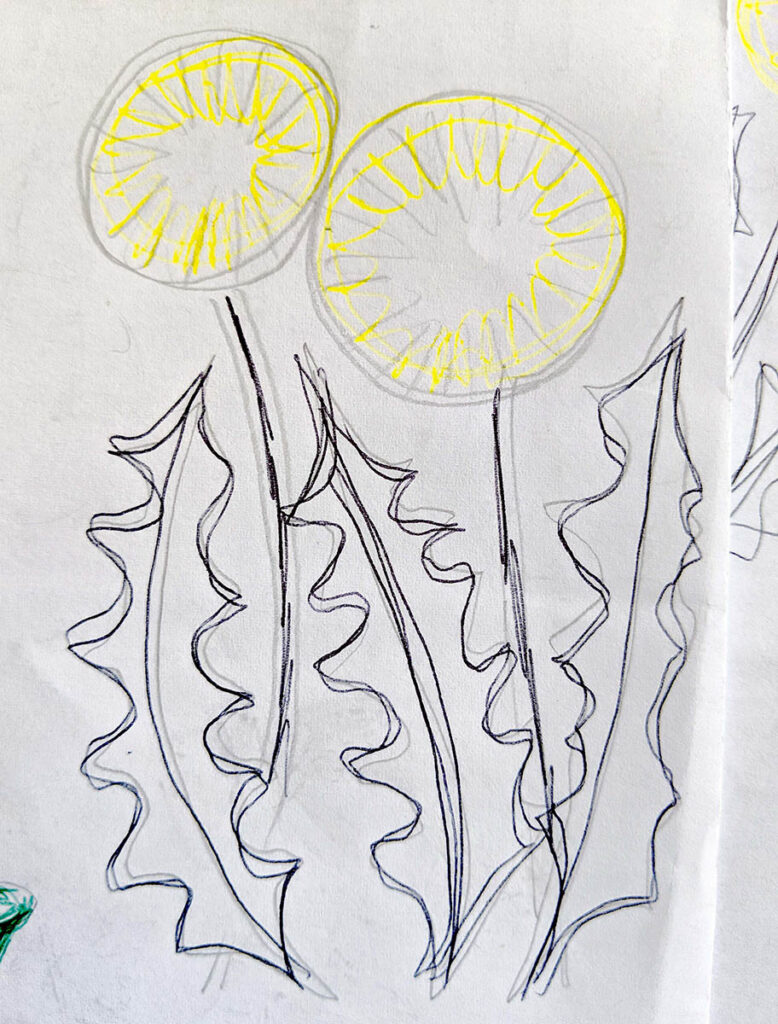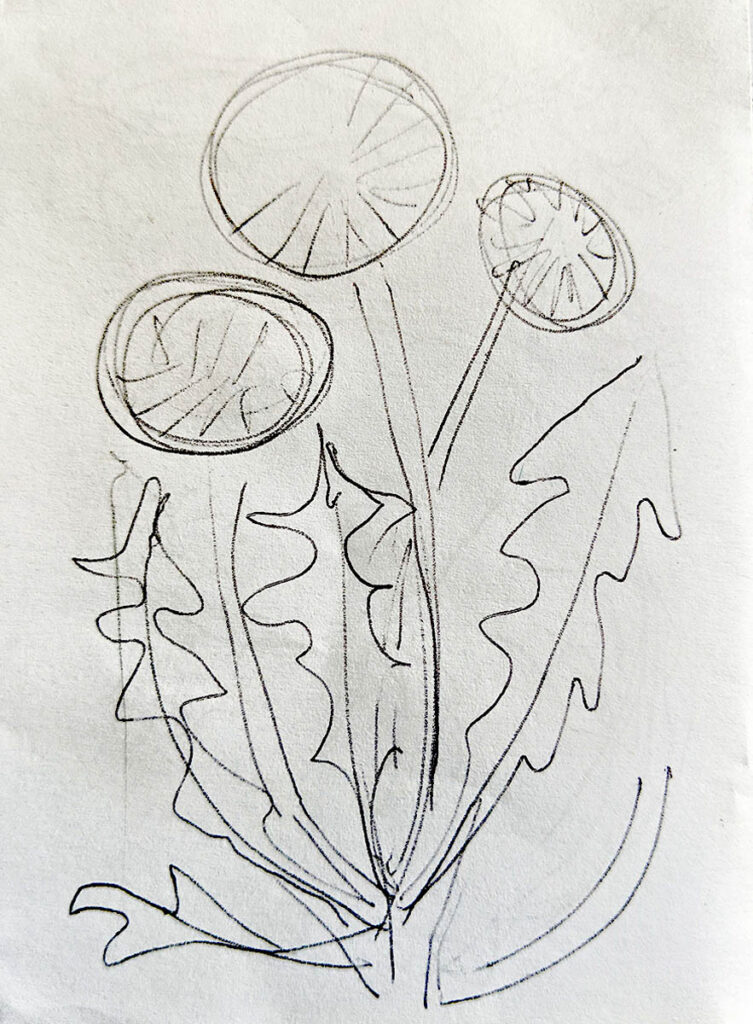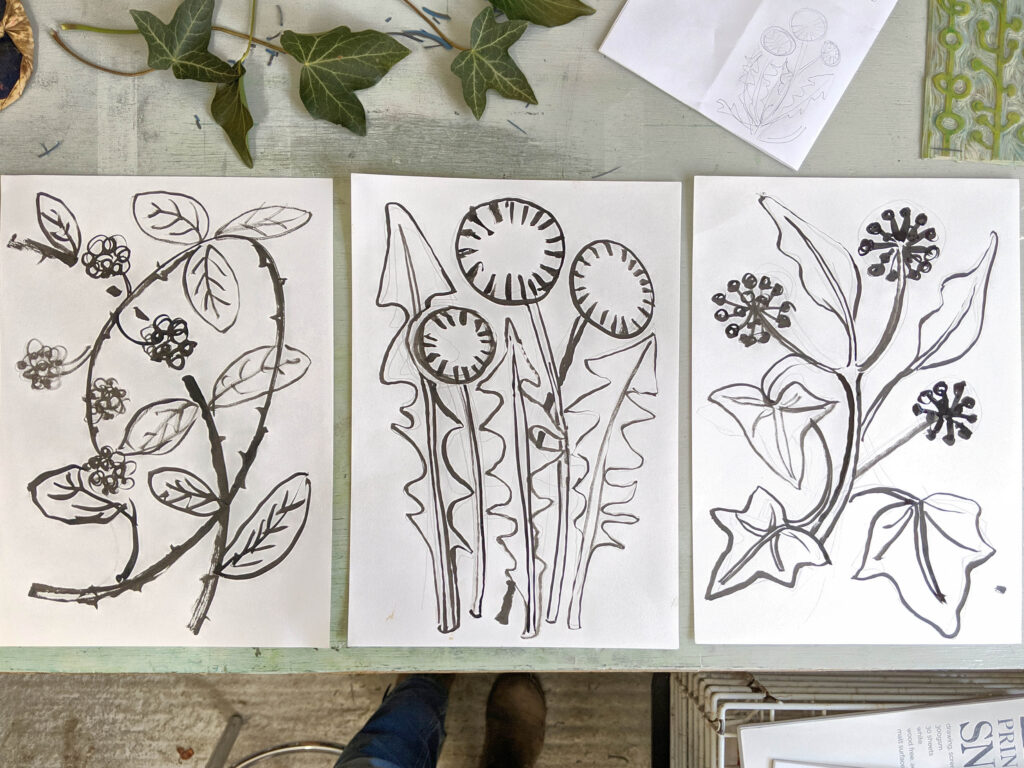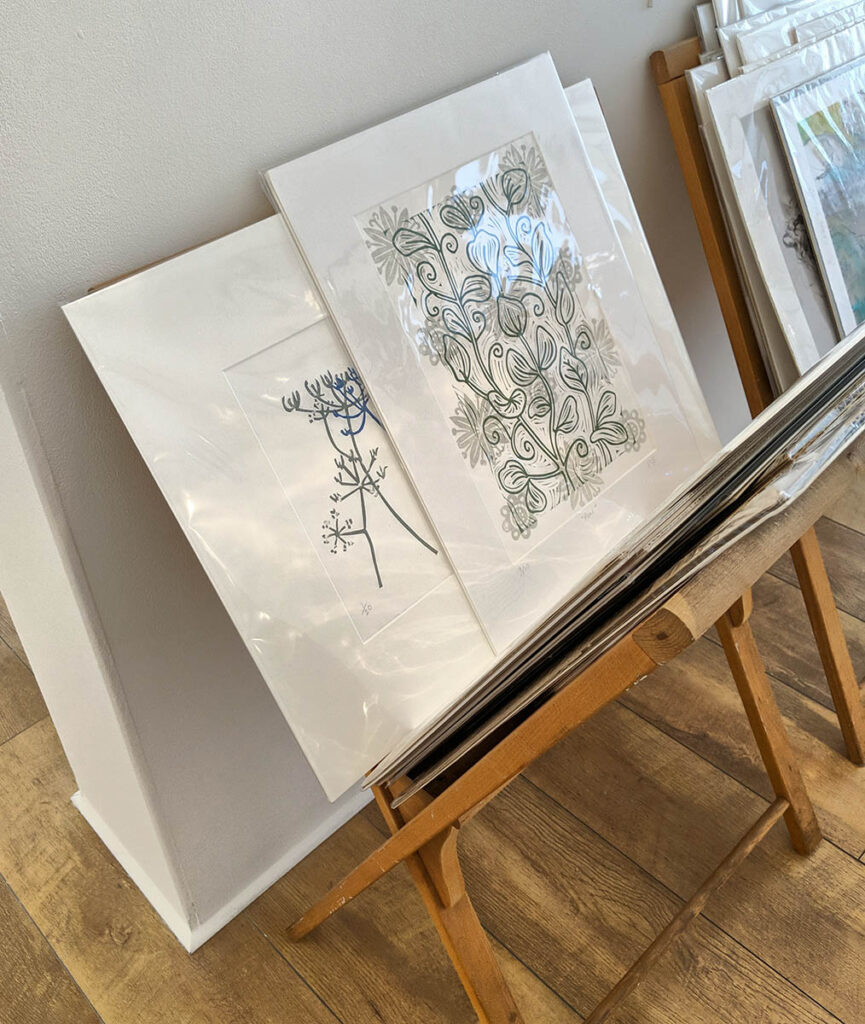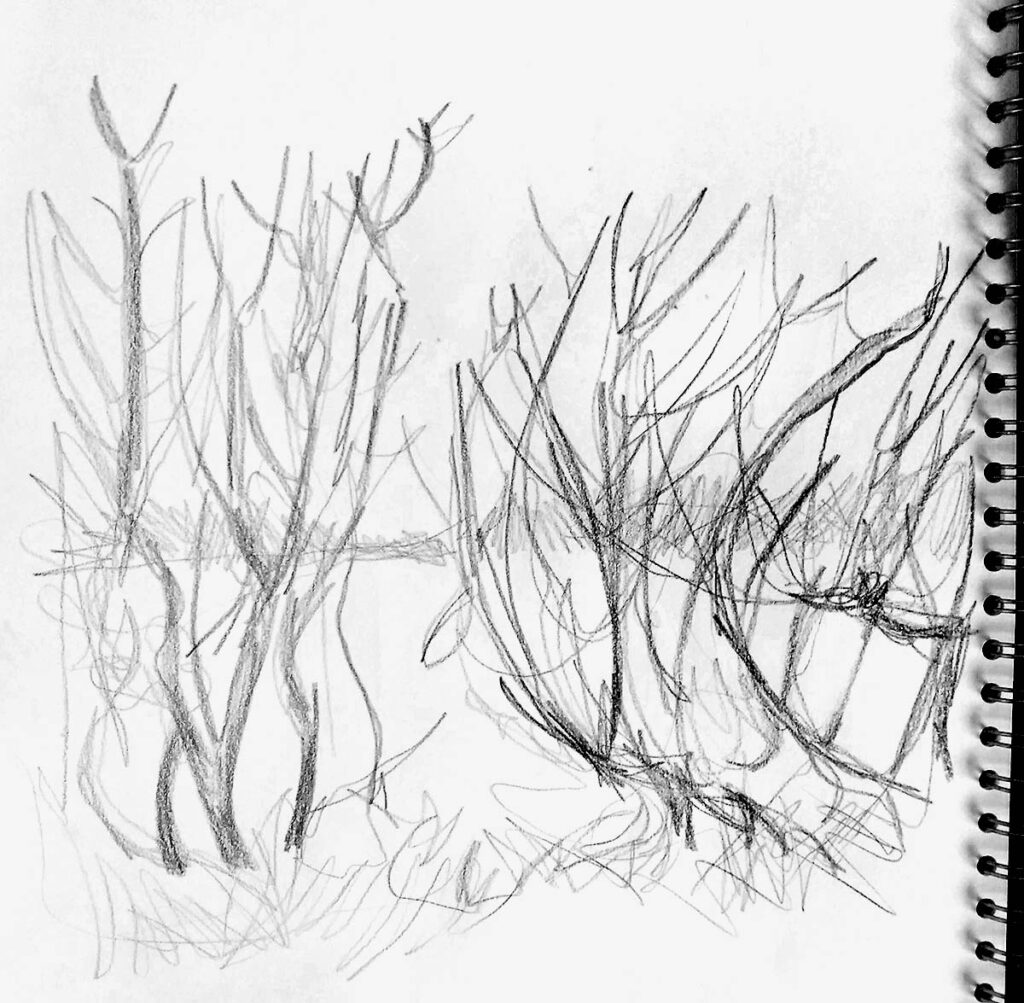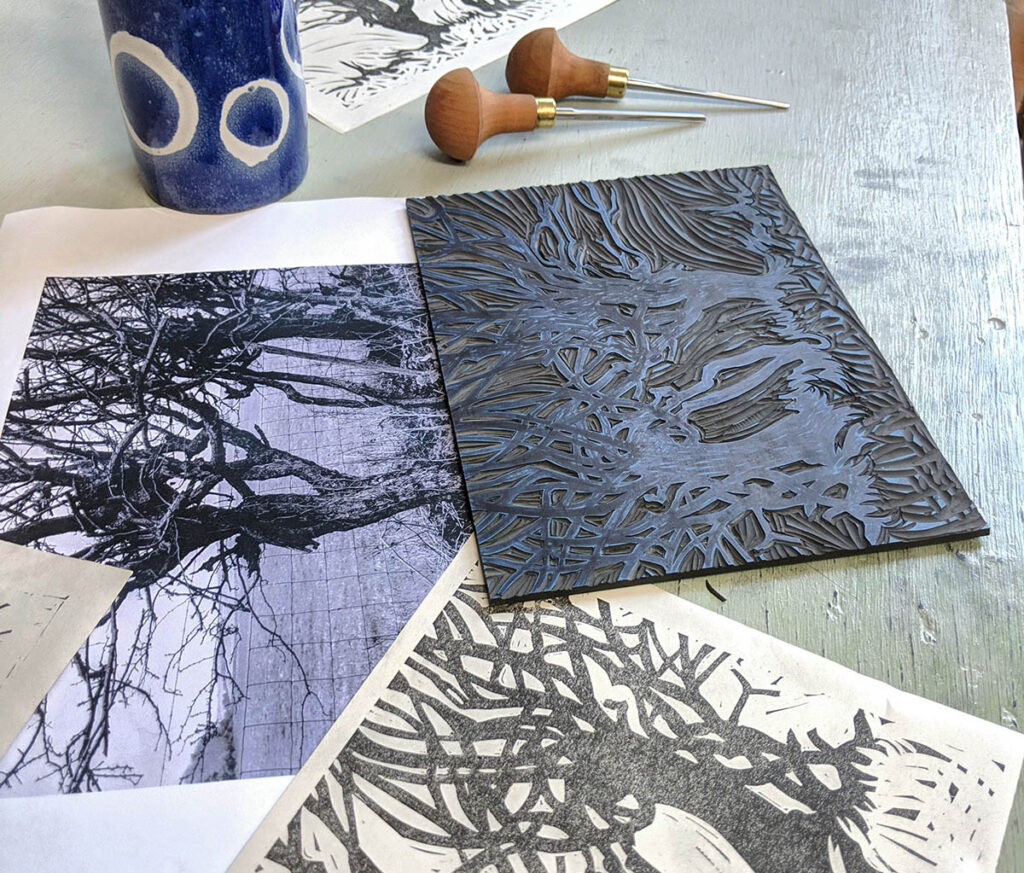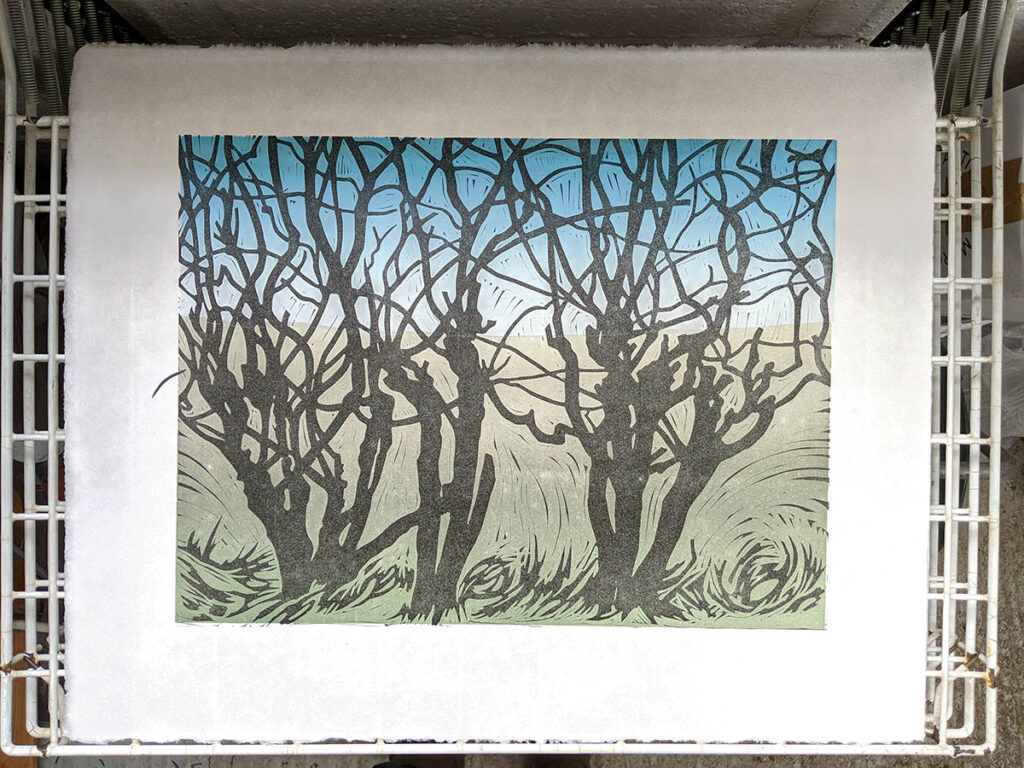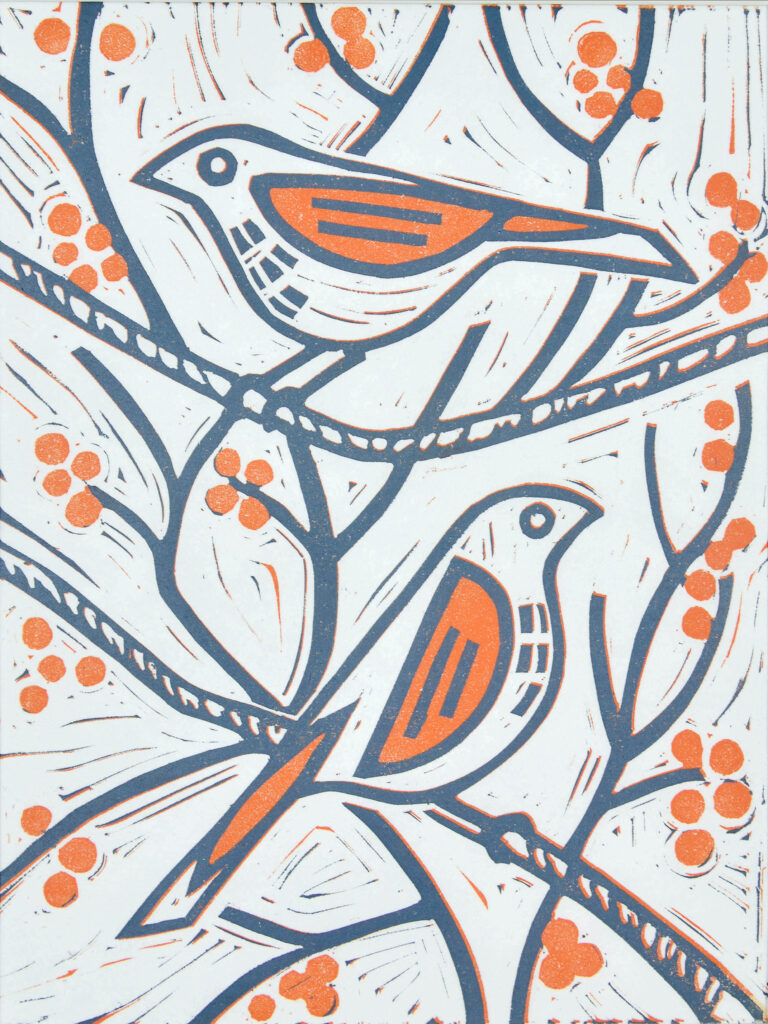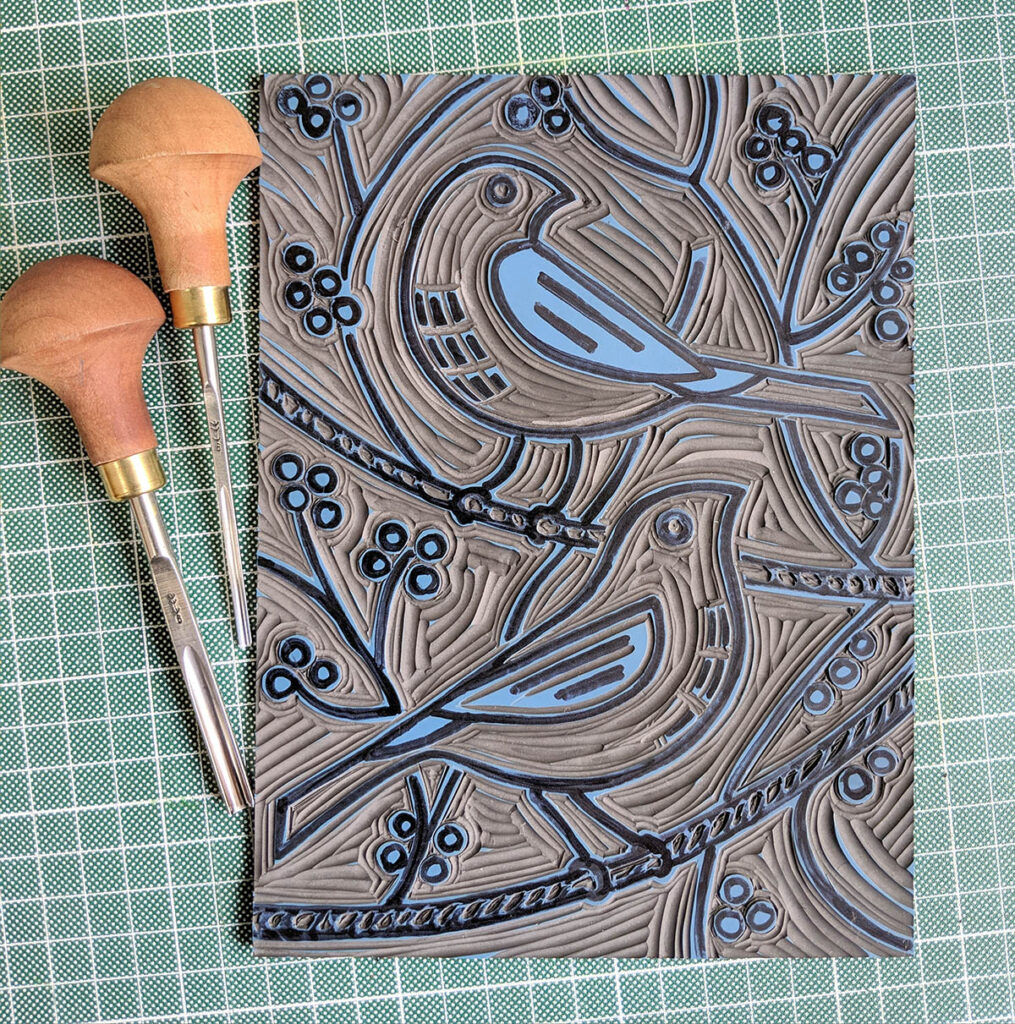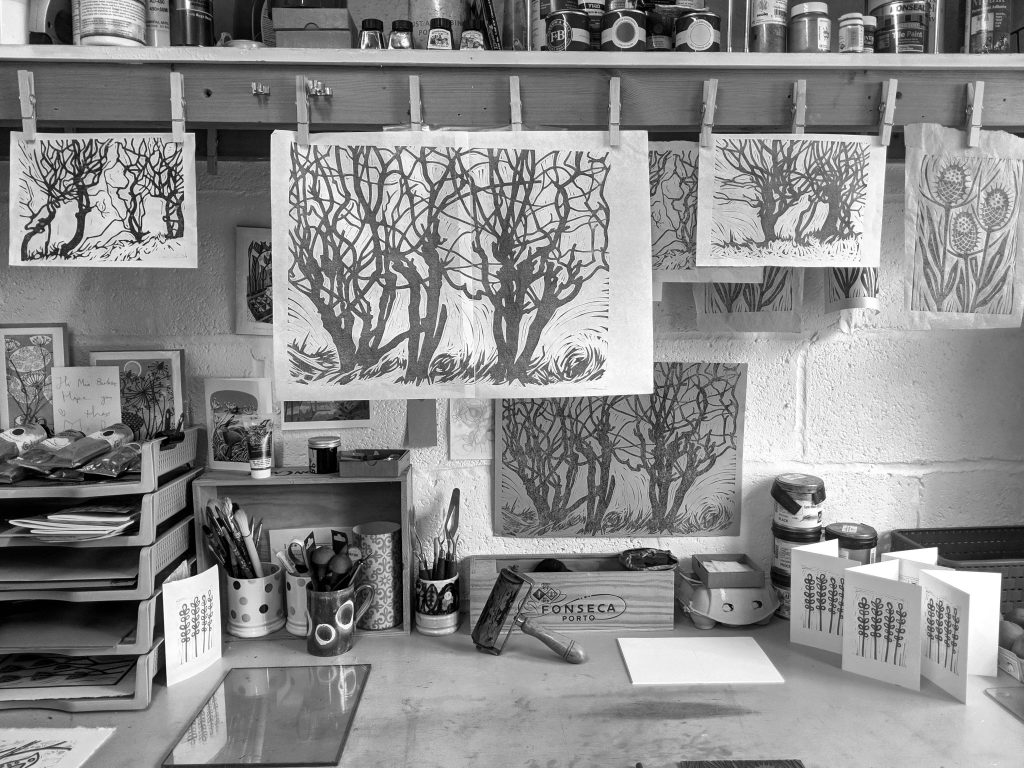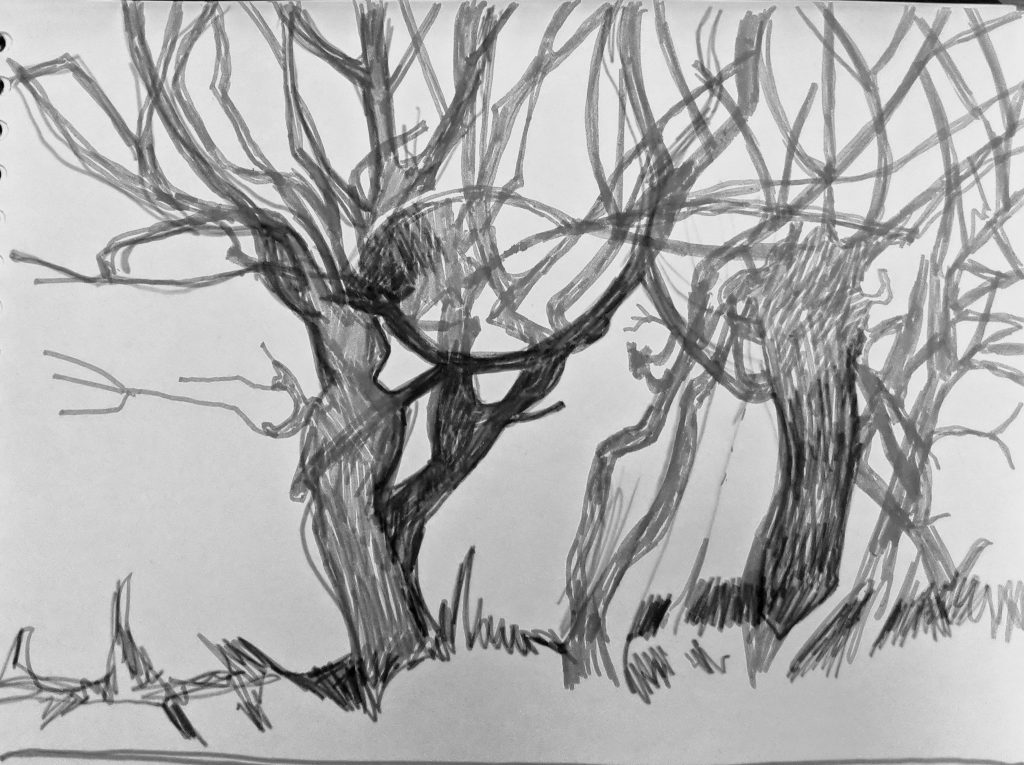
There are many ways to add colour to a lino print, such as chine colle, jigsaw linoprint, or using multiple plates for example. I am drawn to the reduction printing process however, which I find particularly absorbing due to the methodical nature of the technique, and the problem-solving aspect to it.
One problem, that of registering the prints accurately, can be easily solved with Ternes Burton registration pins. The print needs accurate registration so that each layer lines up to create the desired image. I map out a plan on the desk of where the lino will sit, then tape two Ternes Burton registration pins to the desk. Before going anywhere near my printing inks I place each piece of paper face down in the correct position and affix the tabs to the paper so that I will be held in exactly the same position each time I print.

Using more than one colour means that I need to plan the colour scheme carefully before beginning. I often use Photoshop to try out colours on my early sketches or proofs so that I can see how the colours will eventually work together. After that it is a case of deciding which colours to print first. As a rule it will be the lightest colours and the areas of the lino which are going to be easiest to remove after printing the first layer.

The next stage of carving takes some careful thought so that exactly the right areas of lino are removed and nothing else. I will usually mark the lino clearly with a sharpie at this stage.
The second layer of printing is when the Ternes Burton pins become very useful, helping me to accurately position the first printed layer over the second.
As you can see, it’s a lengthy process. Once you are aware of this technique you become attuned to notice the different layers of colour in other artists’ prints and really appreciate the time and effort spent.
Hints and tips for learning the reduction printing method;
Plan carefully. You need to learn to think in reverse and this can take some time to get used to. We are more accustomed to creating colour effects by adding media to the page, such as in a painting. With reduction lino we remove the lino to reveal colour we have already printed… quite a brain-teaser when you think about it!
Start simple. You don’t need a really complicated image to get good effects with this technique, so begin simple, with just two colours until you perfect the technique.
Always print more copies of the first layer than you think you will need. It’s repetitive but you will be less worried when the odd print misaligns or goes wrong later on.
Invest in a pair of Ternes Burton registration pins and accompanying tabs – it makes life so much easier!


